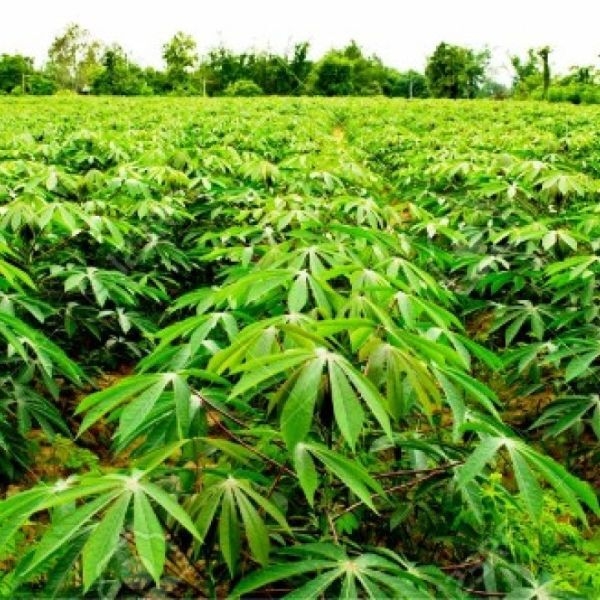

olaoluwa ogunsola
@olaoluwaogunsola
2 years ago
Agribusiness is a term used to describe companies primarily engaged in commercial agricultural processes, such as cultivation, marketing, and distribution.
Different types of agribusiness companies can include farm equipment manufacturers, pesticide and fertilizer suppliers, seed suppliers, and research and development organizations.
These companies will often use modern technology to enhance food production efficiencies, such as robots, sensors, drones, and GPS.
The agriculture industry faces several threats (climate change, droughts) that agribusiness can help to mitigate or resolve.
How Does Agribusiness Work?
The agriculture industry is becoming increasingly crucial for economies worldwide. Nations are looking for new and innovative ways to utilize their farmland and reap the benefits. This way of thinking has led businesses within the industry to develop new production, processing, and distribution methods that involve integrating with other companies or farmers to improve overall efficiency.
Rather than trying to accomplish all the activities involved in the agricultural process such as cultivating, equipment use, seeding, and fertilizing alone, companies have become more efficient by employing businesslike practices in their operations. These new developments have transformed the agriculture industry and spurred the agribusiness
*
Components of Agribusiness
To increase their efficiency, businesses within the agriculture industry implement strategies such as vertical integration
and the usage of value chains
. Agribusiness includes all economic activities related to the food production process, including:
Farm equipment manufacturing
Pesticide and fertilizer supply
Agricultural research and development
Seed supply
Crop and food storage
Farm production and processing
Agricultural financing
Food delivery and marketing
Many farmers will also use modern technologies such as robots, drones, and GPS to increase their overall efficiency and save on costs that they can then pass on to consumers. The way these businesses interact with each other is considered the agribusiness concept. If any business or industry misses the scene, the sector will lack the desired efficiency.
Agribusiness management is critical to boosting a developing nation’s food security through improved and sustainable agricultural production.
As time goes on, a few agribusinesses have become so efficient that it has allowed them to scale their operations and grow their consumer base. It can be both positive and negative. On the positive side, new processes have allowed it to pass on the cost-saving measures. However, it can be considered negative for squeezing out small-scale farm earnings. For example, five businesses now make up over half of the farming machinery industry.
Types of Agribusiness Companies
Agribusinesses are essentially an ecosystem of different types of businesses working together to accomplish a critical task – food production and distribution. Here are the different types of companies involved in agribusiness:
#1 – Farm Equipment Manufacturers
The manufacturing and development of farm equipment and machinery is essential for farmers to harvest their crops and complete various tasks around the farm. These businesses develop the farming tools and machinery used during the agricultural process, such as tractors.
An example of a farm equipment manufacturer is Deere and Company (John Deere), the largest farm machinery manufacturer by revenue in 2020.
#2 – Pesticide and Fertilizer Suppliers
For the crops to grow strong and healthy, farmers use pesticides and fertilizer to promote flourishing crops. Without them, crops become susceptible to disease and pests that can destroy the harvest.
An example of a company that supplies pesticides and fertilizer is Syngenta, one of the world’s largest agrichemical companies.
#3 – Research and Development (R&D)
Research and development
is a vital part of the agricultural industry as new threats (droughts, depleted soil) emerge every day and bring about the possibility of a diminished harvest. These businesses explore new opportunities and innovations to help combat any threats.
Syngenta, the agrichemical company, is primarily involved in research and development.
#4 – Seed Suppliers
Without seeds, farmers have little to work with to produce crops. Companies provide farmers necessary seeds to meet the demands of consumers. Four companies now own over 60 percent of the seed market – Bayer, BASF, Corteva, and ChemChina. Many of these companies are involved in more than one agribusiness aspect, such as the case with Syngenta.
Examples
Most people associate the German company Bayer as just a pharmaceutical company. What many do not know is that Bayer is one of the largest agribusiness companies in the world. In June 2018, the company acquired Monsanto, the largest seed producer by sales.
According to information on Bayer’s website, their portfolio of agricultural products consists of three different sections. These include:
#1 – Crop Protection
Nativo
Movento
Roundup
Luna
Gaucho
Serenade
Sivanto
Acceleron
#2 – Seeds and Traits
Xtendflex
Channel
Deltapine
De Ruiter
Droughtguard
Seminis
WestBred
#3 – Digital Farming
Climate Fieldview
Agribusiness Technology
To keep up with the societal demands, agribusinesses must innovate and develop new technology to overcome threats and keep up with the competition.
Robots – Companies will use different robots to complete various tasks around the farm to maximize efficiency. Example: Harvesting and watering systems.
Sensors – Sensors are also helpful to monitor specific processes that can sometimes be overlooked. Example: Humidity and moisture control.
Drones – Drones can be used to gain an aerial view of the land and see if it needs attention. Example: Spraying pesticides.
GPS – GPS technology is used to gather data and better plan for the harvest. Example: Automated steering tractors.
Opportunities and Challenges
The agribusiness sector is a relatively new industry that has immense potential but also faces serious threats.
#1 – Opportunities
Businesses working together lead to innovation and new technology
Gives rise to the possibility of lower food prices
Helps in better strategic planning and execution
Brings more efficiency
#2 – Challenges
Increased level of competition
Changes in consumer demands
Resource and soil depletion
Farmland reduction
Changing global prices of agricultural products
Climate or weather pattern change
Population growth
Recommended Articles
This has been a guide to What is Agribusiness and its definition. to be continue.